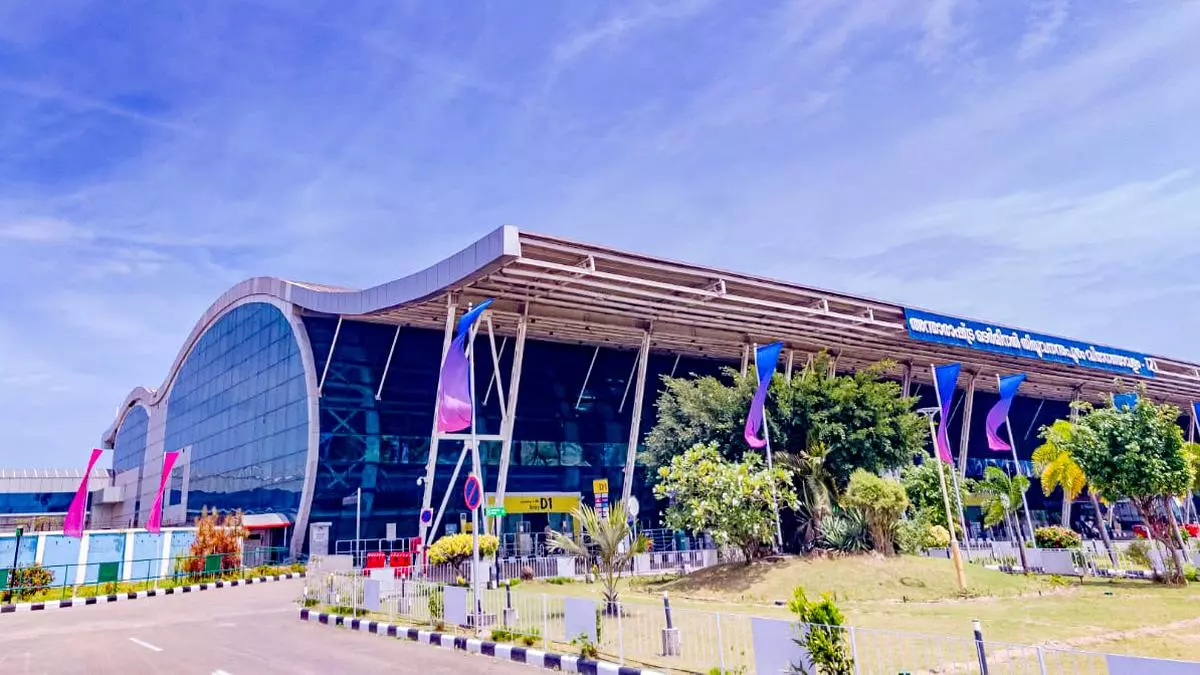
The global shift towards more sustainable energy sources is aimed at reducing the environmental toll of fossil fuels. Bio CBG (Compressed Biogas) is emerging as a favored alternative, offering both viability and cost-effectiveness. India, in particular, could see a significant transformation in its energy sector with the integration of Bio CBG, provided that supportive policies and infrastructure are implemented.
Napier grass: Optimal bio CBG feedstock
A sustainable biomass source is fundamental to Bio CBG production. In India, Napier grass, also known as elephant grass, is recognised as a high-potential feedstock for Bio CBG due to its rapid growth and perennial nature. Hereâs why Napier grass stands out:
1. High Yield: Napier grass is a productive and versatile forage grass native to Africa and southeast Asia. It grows rapidly, reaching a height of 10-15 feet, and can be harvested 5-6 times annually. This high yield makes it an excellent candidate for energy production.
2. Lignocellulosic Biomass: Napier grass falls under the category of lignocellulosic biomass. Its carbohydrate composition typically consists of approximately 35-39 per cent cellulose, 19-23 per cent xylan, and 15-19 per cent lignin (on a dry mass basis).
3. Energy Output-to-Input Ratio: Napier grass boasts an impressive energy output-to-input ratio of approximately 25:1. This means that for every unit of energy invested (such as water, nutrients, and sunlight), it produces 25 units of energy. Such efficiency makes it a promising choice for creating cost-effective and efficient bioenergy systems.
4. Biogas Potential: Due to its significant cellulose and xylan content, Napier grass holds promise as a viable source for biogas production. When its structure undergoes hydrolysis, it breaks down into monomeric sugars that serve as substrates for microbial activity. This quality makes it an excellent feedstock for anaerobic digestion processes.
5. Methane Content: Napier grass exhibits a relatively high methane content, which is crucial for biogas production. The breakdown of its organic matter during anaerobic digestion results in the release of methane, a potent greenhouse gas.
6. Water Use Efficiency: Napier grass demonstrates a high level of water use efficiency. It can thrive with minimal water requirements, making it suitable for regions with varying climates.
7. Drought Tolerance: This grass has the ability to withstand drought conditions, ensuring consistent yields even in challenging environments.
Revolutionising energy model
Bio CBG stands out for its numerous benefits, such as lower greenhouse gas emissions, enhanced energy independence, and reduced costs. As a clean fuel, it emits fewer pollutants than fossil fuels, contributing to a healthier environment and populace. Research by the Council of Scientific and Industrial Research (CSIR) confirms that Bio-CNG can drastically cut greenhouse gas emissions. This could lead to better air quality and a decrease in respiratory and heart-related health issues. Additionally, Bio CBGâs ease of transport and storage positions it as a versatile energy solution for various sectors, including:
1. Transportation: Bio-CNG serves as an eco-friendly vehicle fuel, lessening reliance on imported oil and promoting cleaner urban mobility.
2. Electricity Production: Bio-CNG could be particularly beneficial for electricity generation in rural areas with limited grid access.
Overcoming production hurdles
Despite its promise, Bio CBGâs path to becoming a mainstream energy source in India is fraught with challenges. The steep initial investment for production infrastructure, such as anaerobic digesters and biogas processing units, is a significant obstacle. Farmers also encounter difficulties in securing affordable financial and technical support to initiate production. To overcome these barriers, a collaborative effort from policymakers, investors, and the government is essential. Potential solutions include:
1. Economic Support: Offering subsidies or low-interest financing to encourage farmers to cultivate Napier grass and establish biogas facilities.
2. Information Exchange Programmes: Initiatives by the government to facilitate knowledge transfer and technical guidance for farmers and producers.
3. Policy Frameworks: Development of comprehensive policies that streamline the process of bio CNG production and usage, ensuring a conducive environment for growth.
4. Public-Private Partnerships: Encouraging collaborations between the government and private sector to leverage each otherâs strengths in advancing the Bio CBG agenda.
Plantation, harvest planning for smooth operation
Creating a plantation and harvesting plan for a 12 TPD (tonnes per day) biogas plant with a daily feedstock requirement of 240 tonnes involves strategic planning and coordination. Here are the steps to ensure a continuous supply:
1. Feedstock Assessment: Identify suitable feedstocks for your bio cbg plant. Consider options like agricultural residues (crop stubble, straw), organic waste, or dedicated energy crops (such as Napier grass). Calculate the annual feedstock requirement: 240 tonnes/day à 365 days = 87,600 tonnes/year.
2. Crop selection and planting: Choose an energy crop that aligns with your climate and soil conditions. For this plan, letâs focus on Napier grass due to its high yield and suitability for biogas production. Plan multiple planting cycles throughout the year to meet daily feedstock needs.
3. Harvesting schedule: Divide the year into harvesting cycles (e.g., quarterly or monthly). Napier grass has a growth cycle of approximately 2 months. Schedule planting and harvesting to align with these cycles.
4. Plantation area: Allocate land for Napier grass cultivation. The required acreage depends on the yield per acre. Assuming an average yield of 150 tons/acre/year, youâll need approximately 584 acres (87,600 tons / 150 tons per acre).
5. Crop rotation: Implement a crop rotation plan to maintain soil health and prevent nutrient depletion. Alternate between Napier grass and other crops (if applicable).
6. Storage and preservation: Construct feedstock storage facilities to store excess biomass during peak harvest times. Use silage pits or bales to preserve feedstock quality.
7. Monitoring and adjustments: Regularly monitor crop growth, health, and yield. Adjust planting and harvesting schedules based on actual biomass production.
8. Backup feedstock: Identify alternative feedstocks (secondary crops or organic waste) in case of shortages.
9. Biogas plant efficiency: Ensure your biocbg plant is optimized for efficient biogas production. Regular maintenance and monitoring are crucial.
10. Community engagement: Involve local farmers and communities in the cultivation process. Educate them about sustainable practices and the importance of feedstock supply.
Way forward
The journey to integrate Bio CBG into Indiaâs energy mix is a promising one, with the potential to significantly alter the countryâs energy dynamics. The key to success lies in:
1. Strategic planning: A clear roadmap that outlines the phased development of Bio CBG infrastructure and market penetration strategies.
2. Consumer awareness: Educating the public about the benefits of Bio CBG to foster acceptance and demand.
3. Innovative solutions: Encouraging technological advancements to optimize Bio-CNG production and utilization processes.
Embracing Bio CBG can lead India towards a more sustainable and energy-secure future. With concerted efforts from all stakeholders, the vision of a cleaner, greener, and self-sufficient energy landscape is well within reach. The time is ripe for India to champion the cause of Bio CBG and set a precedent for other nations to follow.
1. Technological advancements: Investment in research and development to create more efficient biogas production and upgrading technologies.
2. International collaboration: Learning from global best practices and adapting them to the Indian context can accelerate Bio CBGâs integration into the energy sector.
Final thoughts
Bio CBG has the potential to be a cornerstone in Indiaâs sustainable energy framework. It offers a path to reduce the countryâs carbon footprint and improve energy security. The collective efforts of the government, private sector, and the community are essential to overcome the challenges and realize the vision of a greener future powered by Bio CBG. With the right support and initiatives, India can lead the way in sustainable energy innovation and become a model for other nations in the transition to cleaner energy sources. The time to act is now, to ensure a prosperous and sustainable tomorrow.
(The author is Managing Director, Karmayogi Ankushrao Tope Samarth SSK Ltd., Ankushnagar in Jalna district, Maharashtra)
Crime Today News | Business & Economy
Source | Powered by Yes Mom Hosting






